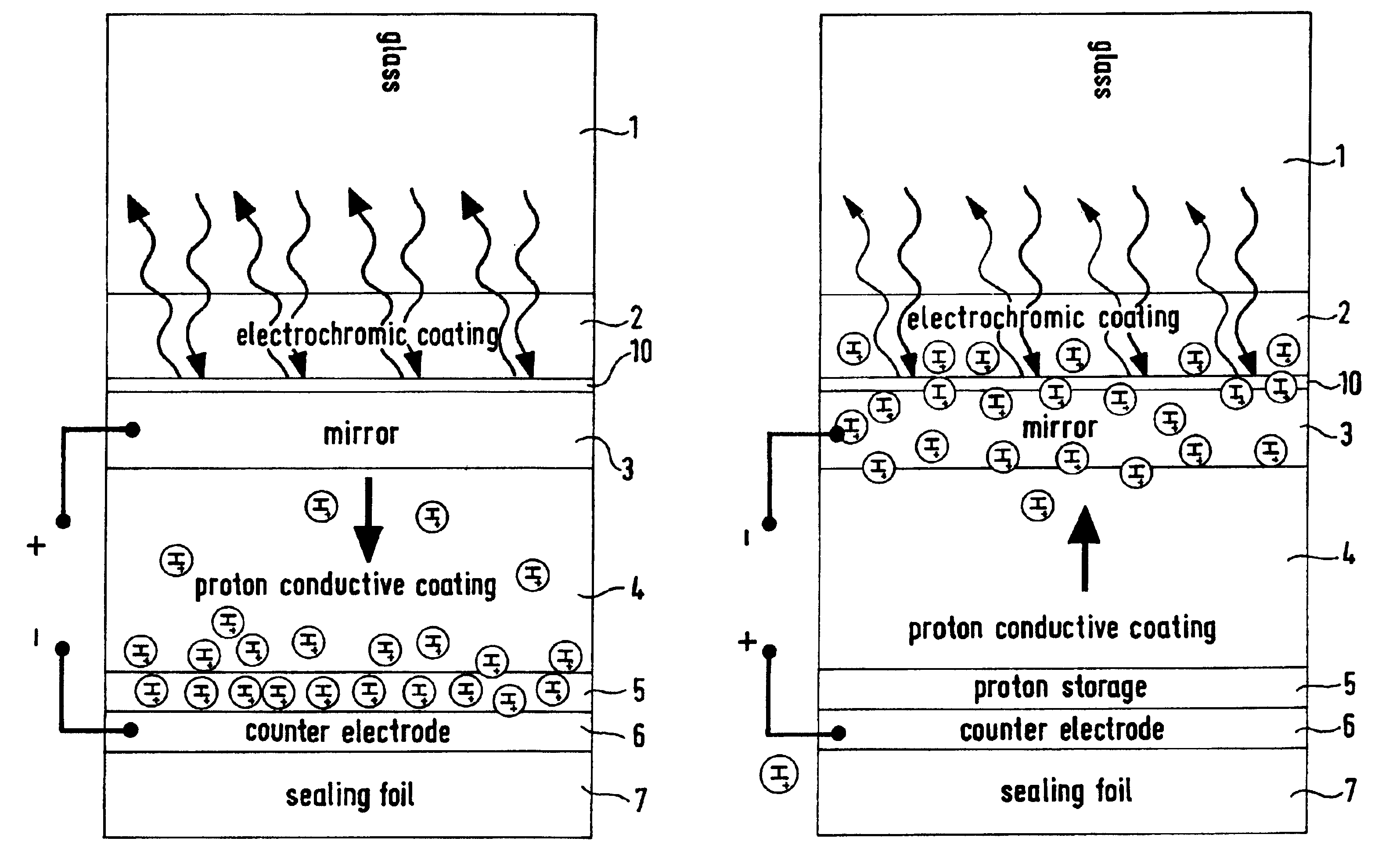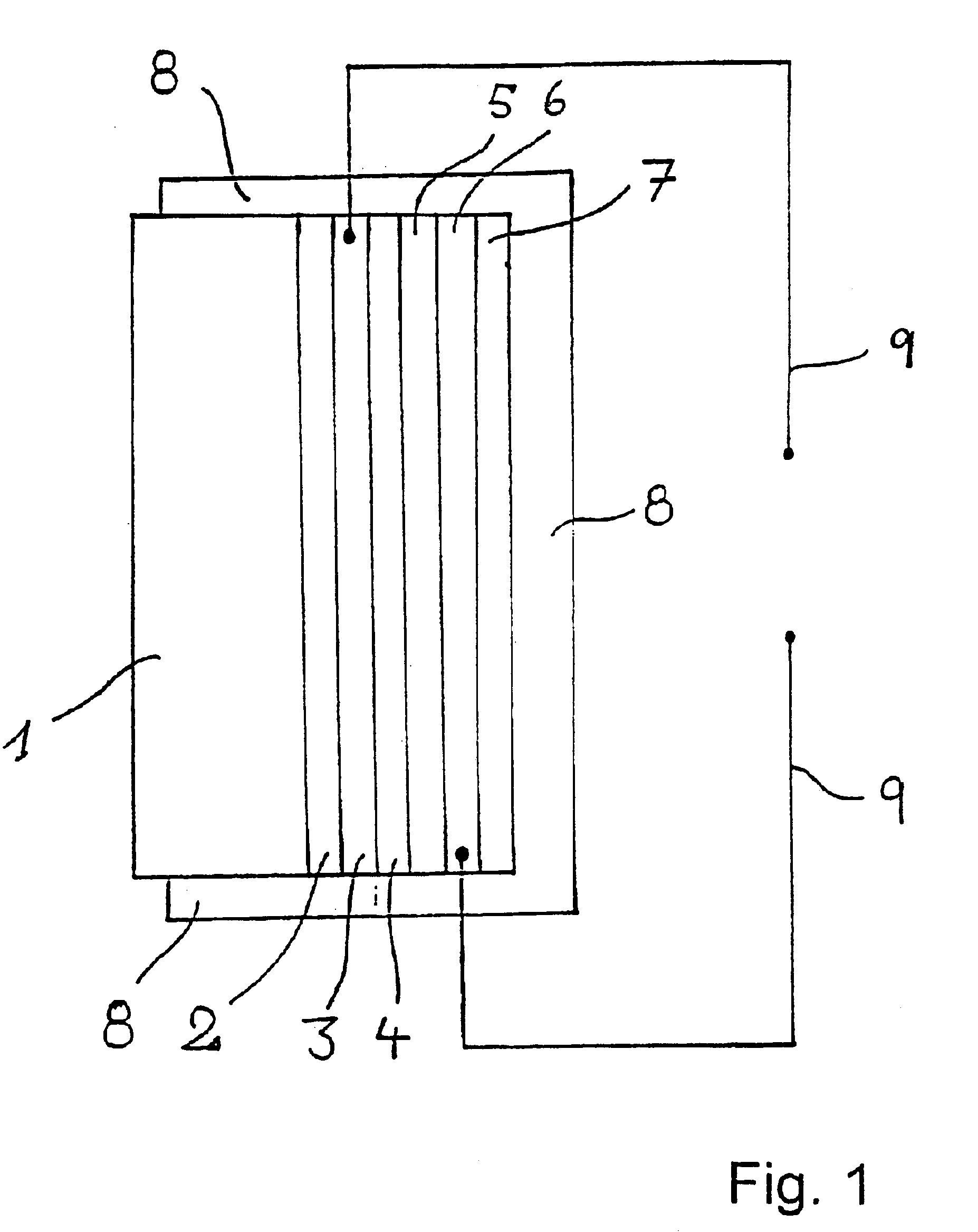Electrochromic glass component
a technology of electrochromic glass and components, applied in the field of electrochromic mirrors, can solve the problems of insufficient ion conductivity of ion-conducting layers from the state of the art used for electrochromic glass components, too thick ion-conducting layers described there, and too complex and expensive as regards their manufacture mode, so as to achieve high ion conductivity and quickly change the electrochromic layer.
- Summary
- Abstract
- Description
- Claims
- Application Information
AI Technical Summary
Benefits of technology
Problems solved by technology
Method used
Image
Examples
Embodiment Construction
The electrochromic glass component, which is used as a motor vehicle mirror, consists of a glass substrate 1 having a thickness of 2 mm. A layer system which has the following successive layers is applied to this substrate 1.
An electrochromic layer 2 of tungsten oxide having a thickness of .about.700 nm, a mirror layer 3 of palladium having a thickness of .about.70 nm, a polymer membrane 4 of polybenzimidazols polymer having a thickness of 30 .mu.m, a proton store 5 of tungsten trioxide having a thickness of 700 nm, a rear electrode 6 of gold having a thickness of 100 nm, a polyester film 7 having a thickness of about 175 .mu.m as well as a sealing layer 8 of traditional plastics, which wraps around the entire coating system including the glass substrate 1 and thus seals the coating system comprising layers 2 to 7. Seal 8 is only interrupted by copper wires 5, which contact the mirror layer 3 on the one side and the rear electrode 6 on the other side to apply a voltage to the latter...
PUM
| Property | Measurement | Unit |
|---|---|---|
| thickness | aaaaa | aaaaa |
| thickness | aaaaa | aaaaa |
| thickness | aaaaa | aaaaa |
Abstract
Description
Claims
Application Information
 Login to View More
Login to View More - R&D
- Intellectual Property
- Life Sciences
- Materials
- Tech Scout
- Unparalleled Data Quality
- Higher Quality Content
- 60% Fewer Hallucinations
Browse by: Latest US Patents, China's latest patents, Technical Efficacy Thesaurus, Application Domain, Technology Topic, Popular Technical Reports.
© 2025 PatSnap. All rights reserved.Legal|Privacy policy|Modern Slavery Act Transparency Statement|Sitemap|About US| Contact US: help@patsnap.com



